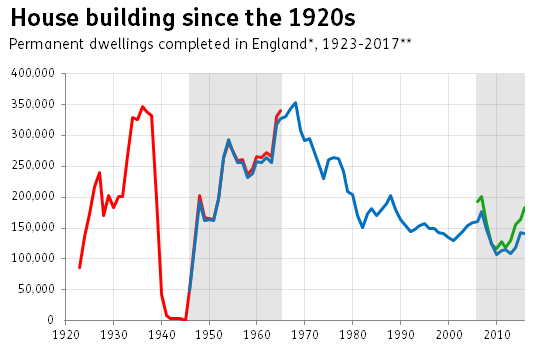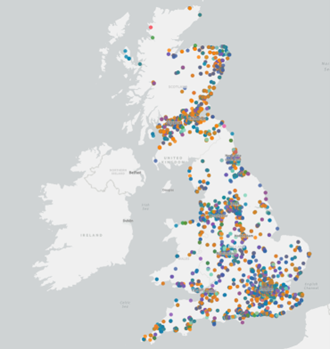Why there are more suspended timber and concrete floors than you might think
The UK has a rich and long history. Many of the buildings around us are hundreds of years old, and this includes the homes many of us live in. The construction of domestic dwellings has evolved considerably over time.
Many of the principles used in construction did not change dramatically until the 1950’s and 60’s when material availability changed and Gas powered central heating became commonplace after the completion of the 'Great switch' (1968-1976) a period when dirty, poisonous ‘Town Gas’ (derived from burning Coal) was replaced with ‘Natural Gas’ a system still in use today, 50 years later.
This change of main heating source, removed the need to have open fireplaces, chimneys and the associated ventilation systems needed to support them. As a result, we were afforded much more flexibility in the use of space and materials.
The construction of floors also evolves over time with the construction of suspended timber floors being ubiquitous up to the 1950’s when (through material shortages and changes in technology) solid concrete floor construction gained popularity.
Nearly 5 million homes were constructed between 1870-1914, a further 4.3 million in the 1920’s and up to 280,000 homes a year through the 1930’s and into the early 1940’s. From the 1950’s onwards records indicate the UK built new homes at a diminishing rate dropping to as low as c.105,000 a year in the early 2010’s (precipitating our current housing crisis). What this means is roughly 2/3’s of homes, somewhere in the region of 20 million have been build since the Second World War.

House building data can be viewed here
Based on the popularity and longevity of suspended timber floors as a construction type, combined with the introduction of suspended concrete (or block and beam floors), it is safe to assume there are many millions of homes in the UK with suspended floors.
This is a question we are regularly asked at Q-Bot, so here is some of the data available to us.
There are c.29.9m Domestic dwellings in the UK, comprising of 26.4m homes in England & Wales, 2.67m in Scotland, and 0.83m in Northern Ireland.
Currently publicly available Energy Performance Certificate (EPC) shows 19,177,832 valid EPC records, 66% of the total number of dwellings in the UK. Of these 5,648,555 are marked as having suspended floors, or unheated spaces below (cellars / basements). We can therefore extrapolate that there is a minimum expected total of 8.5m homes with these floor types.
It is important to note, it is also widely accepted there are inaccuracies in EPC data, and analysis by Q-Bot shows that there are a significant number of ‘false negatives’ (EPC certificates where the floor construction type is incorrectly lodged as solid, rather than suspended) within the EPC database. We can therefore consider that the value of 8.5m, is likely to be a conservative total.
Somewhere in the region of 17% (c.5m) of UK domestic dwellings are owned by Social Housing Providers. Of these 3,355,424 properties have EPCs, of which 700,786 are marked as having suspended floors. This extrapolates to a conservative 1m (20%) properties under the ownership and management of social housing providers with suspended floors.

The map indicates the approximate distribution of the 700,786 suspended floor properties over England, Scotland & Wales.
As you can see there are obvious clusters of properties constructed with suspended timber floors around our largest population centres and cities, where rapid urban growth was evident during the inter war and post 2nd world war periods.
Q-Bot has analysed data for hundreds of thousands of Social Rented properties for our clients who have successfully used the data and insights to develop successful funding applications and energy efficiency projects.
The majority of properties with EPCs identifying suspended floors, however are Owner Occupied (3,852,023) and privately rented (1,014,505). 45% of Private landlords own only 1 rental property.
Overall, about 1 in 3 homes in the UK has a suspended floor, and where the construction is timber, they were designed to offer greater ventilation, which results in significant draughts and heat loss. As we no longer use open fireplaces as a main heating source, we no longer require these homes to be so draughty and it is possible to dramatically improve the comfort and thermal performance of these millions of homes, making significant savings on cost and carbon.
If your home, or the ones you manage were built prior to the 1960’s then there is a strong possibility that draught you are feeling is coming from below your feet.
If you would like to learn more about how you can improve the energy performance of your property, or if you are a landlord and want to identify those homes which have suspended timbers floors, then simply click here.
